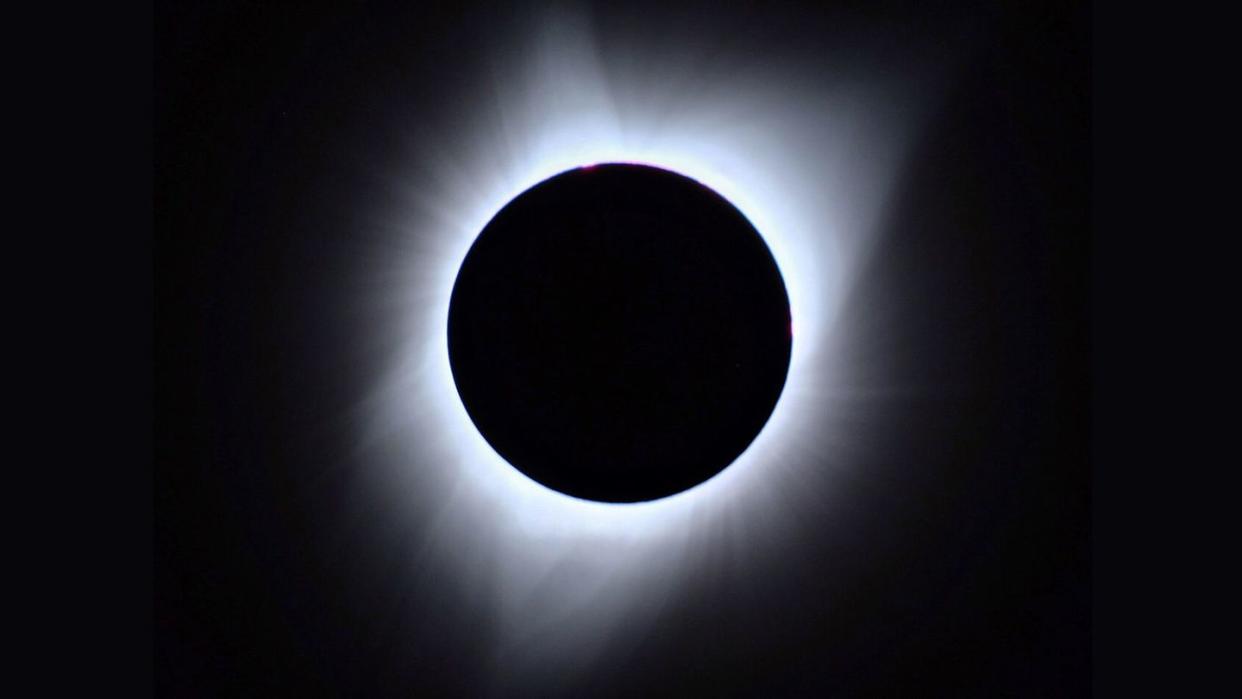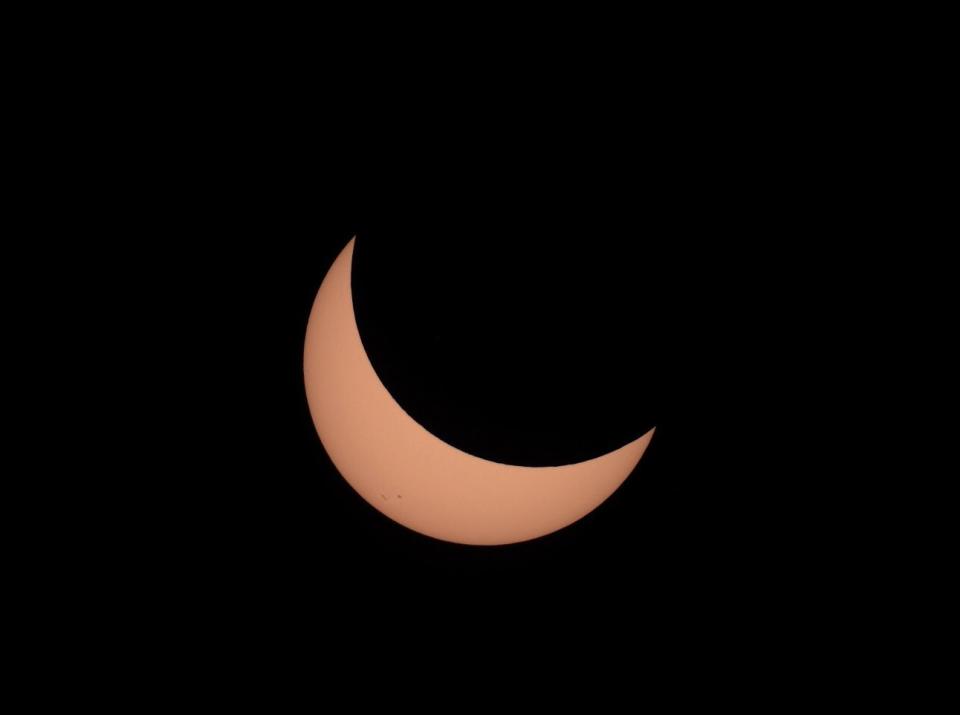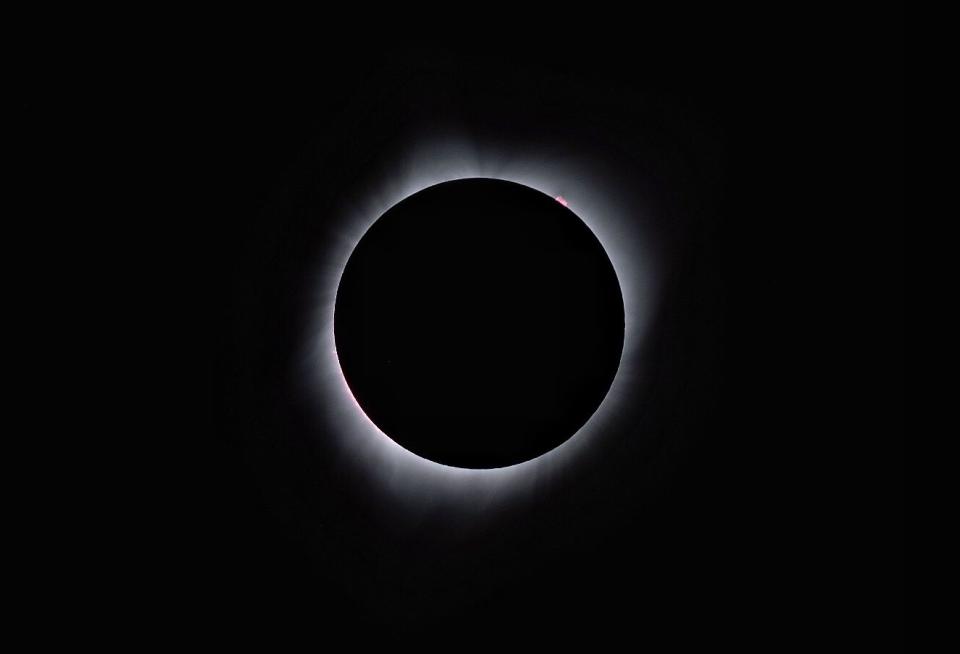The Cosmic Weirdness of Solar Eclipse Totality

The real surprise was the cicadas.
As totality blanketed Gallatin, Tennessee, just north of Nashville, and the strange twilight hue from the almost-full eclipse dimmed to darkness, a chorus of cicadas erupted from the surrounding forest. The male insects instinctually started rapidly vibrating the "timbals" in the exoskeleton of their abdomens, generating the distinct song of the cicada. When the midday night song ended, as the sun broke free of the moon to bathe the countryside in daylight again, the birds responded with their morning song.
I looked eagerly, but I did not see any shadow bands—snakelike tendrils of shadow that sweep across the land—which are still a mystery to scientists, though researchers believe they depend on the atmospheric conditions at a given location during a total solar eclipse. I did see the trees cast a multitude of pinhole-camera shadows of the growing eclipse all over the ground, and I caught the diamond ring for a split second just before totality. When the sliver of remaining sun seemed to disappear through my eclipse glasses, I took them off only to find a ring with a final bright point of sunlight on the southwest limb of the moon, sparkling like a diamond in the sky.

I didn't even try to photograph the eclipse, leaving that to Popular Mechanics photographer Michael Stillwell out in western Wyoming. His photos are featured here, and they put anything I could have possibly captured to shame.
During totality, the temperature dropped about 10 degrees, the dogs ran around wildly after lazing around in the hot afternoon sun, and the great black hole in the sky revealed the white corona of the sun—our host star's atmosphere, hotter than the surface, though astronomers still do not know why. When I squinted, I could just make out small red flares around the circumference of the moon, solar prominences of plasma erupting into space.

But perhaps the most amazing thing about any total solar eclipse is how it differs from location to location, eclipse to eclipse. No two are the same. The duration of totality varies, the natural phenomena around you will be different every time, and the environment you stand in here on Earth defines the experience as much as the alignment of the moon and the sun above. The singular uniqueness of any given total solar eclipse, in a distinct position on the globe, is the reason so many people devote their lives to chasing the shadow of the moon all over the world.
In Tennessee, the show was nothing short of spectacular—even surreal—and the highlight of the spectacle was the unexpected song of the cicadas.
You Might Also Like

